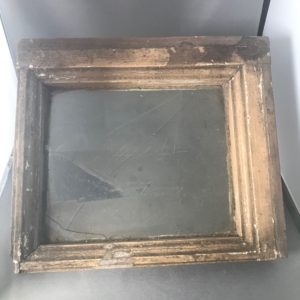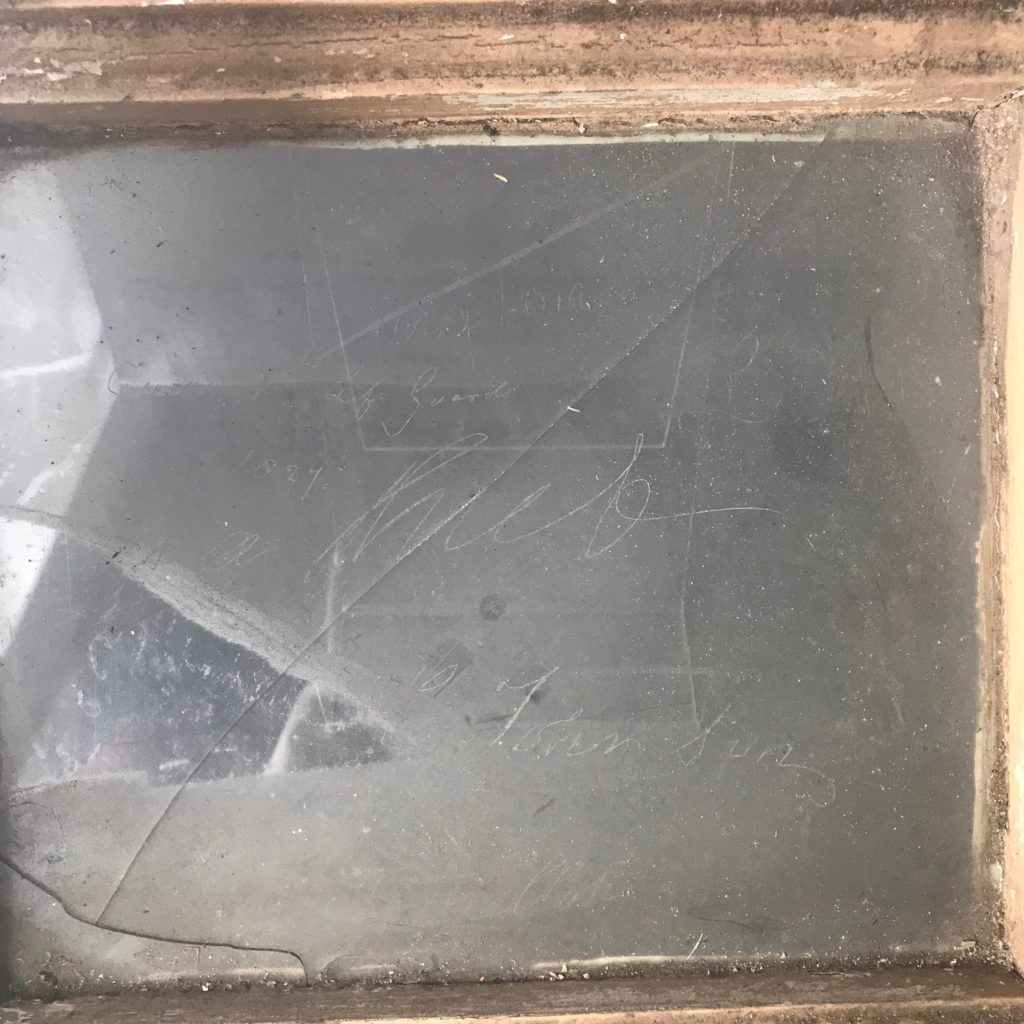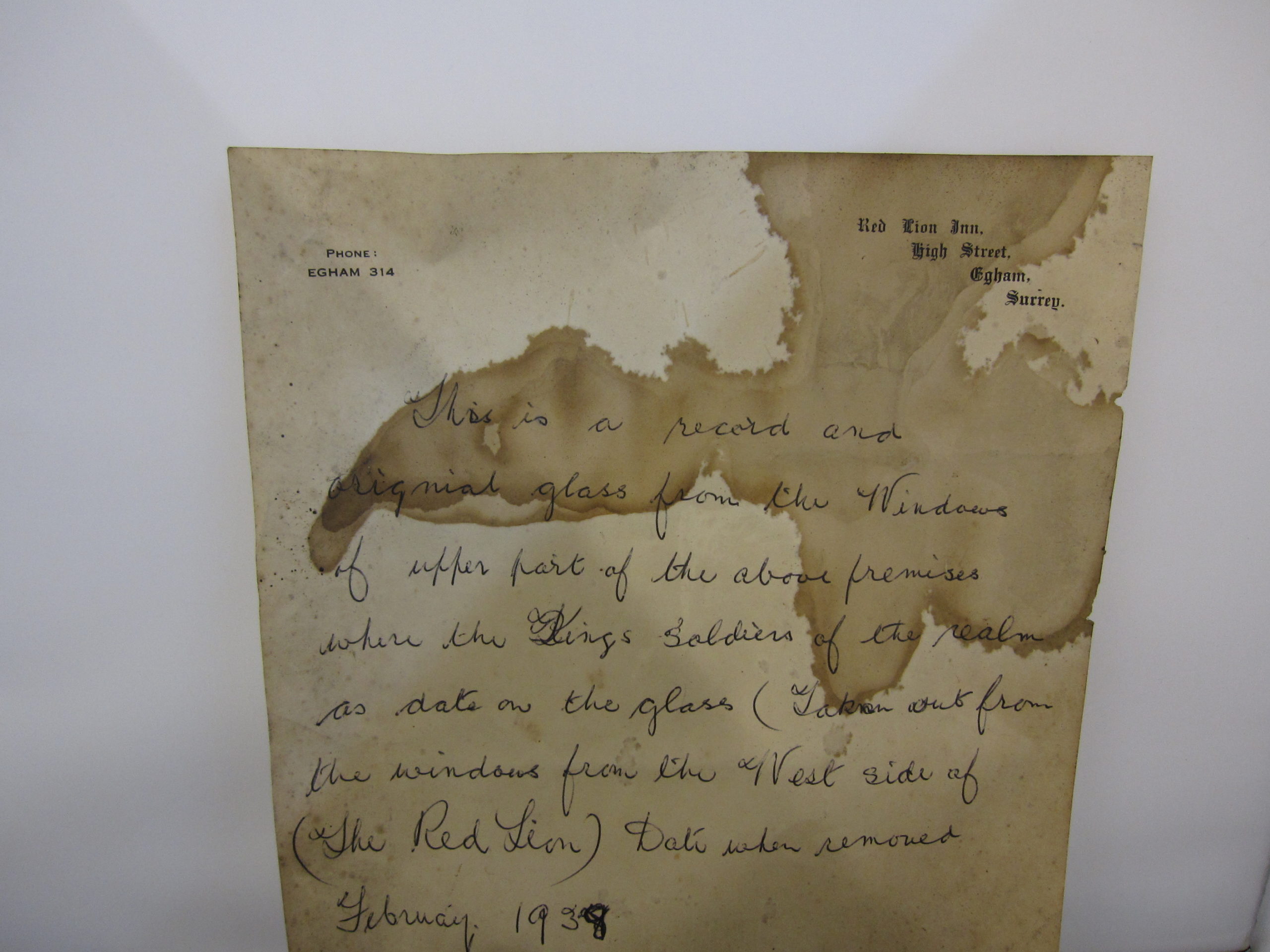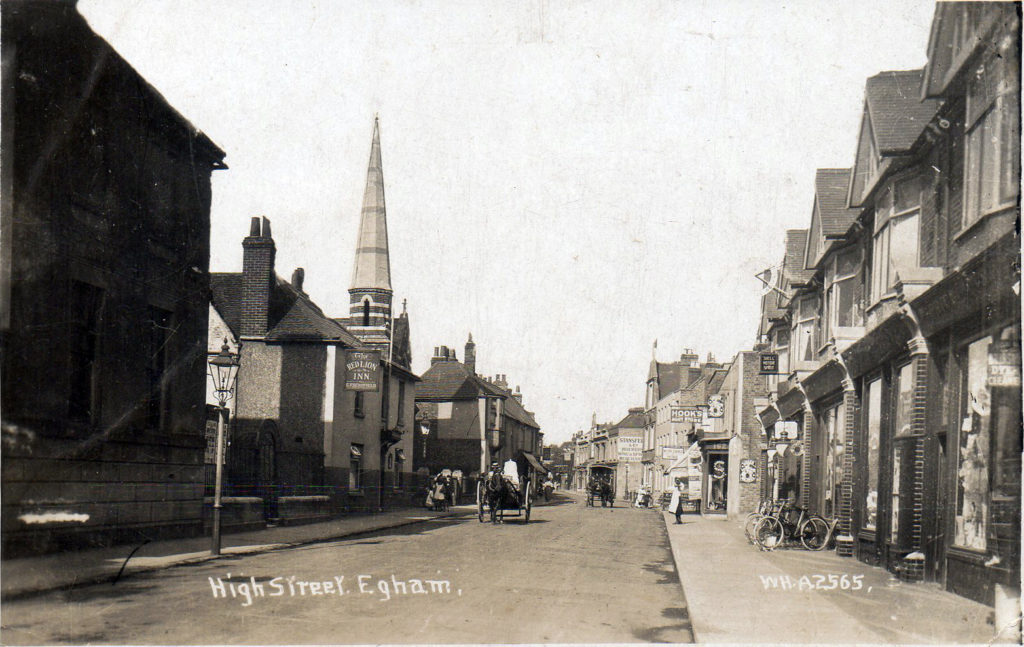Inscribed pane of glass from The Red Lion, High Street

Object MC1067 in the Museum is an inscribed pane of glass from the windows of the upper west side of the Red Lion Inn, removed in February 1938.


An accompanying letter explains “This is a record and original glass from the windows of upper part of above premises [The Red Lion Inn] where the King’s soldiers of the realm as date on the glass (Taken out from the windows from the West side of the Red Lion.) Date when removed February 1938.”
Life Guards:
Rather than the type of lifeguard who rescues you if you have difficulty swimming. the Life Guards were a cavalry unit and senior regiment in the British Army, formed in the 1650s. They are now part of the Household Cavalry and operate as both an armoured reconnaissance unit and a ceremonial guard to the monarch.
The Life Guards’ origins lie in three troops of cavalry raised from gentlemen in King Charles II’s court-in-exile in the Netherlands between 1658 and 1659. At first, they were sent as Charles’s contribution to the Spanish War (1654-60) against the English Commonwealth and its French allies.
When Charles was restored to the throne in 1660, these three units joined him as his bodyguard. Charles created a fourth unit, but this was disbanded in 1683. The remaining three, known as Horse Guards, first saw action in the Third Dutch War in 1672 (1672-74) and in suppressing the Monmouth Rebellion at Sedgemoor in 1685.
Several of these units went on to serve under King William III in Ireland, a deployment that included the Battle of the Boyne (1690). They then moved to Flanders during the Nine Years War (1688-97).
Life Guards also fought in the Peninsular War (1808-14), from 1812-1814. In 1815, two squadrons from each Life Guard regiment led the Household Brigade’s charge at Waterloo against their French heavy cavalry equivalents. This was their last active service until the 1880s. However, in the mid-19th century, Life Guards engaged in maintaining public order in London.
Relevance to the Red Lion?
George IV was particularly fond of Windsor Castle, and commissioned Sir Jeffry Wyatville to rebuild and alter sections of it. George IV died at Windsor Castle on the 26th June 1830 and was later buried there in St George’s Chapel on the 15thof July. When the King resided in Windsor, the king’s guards often lodged in Staines and Egham. Potentially, the Red Lion Inn was a place for Life Guards to stay. Could this inscription have been written by a drunken member of the Life Guards?

Margaret C Stewart


